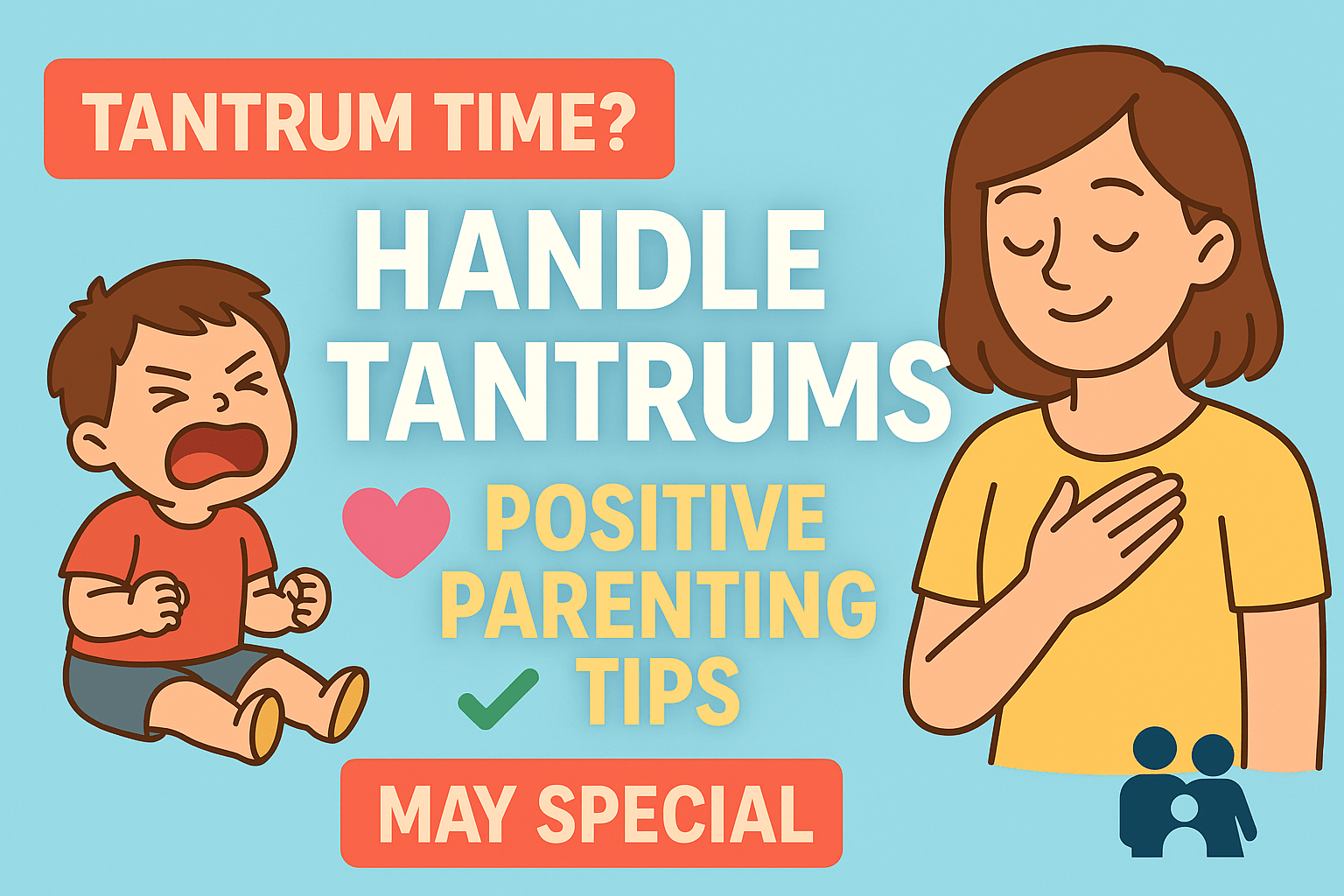As the warmth of May settles in, children often become more energetic, excited, and, sometimes, a bit more emotional too. With school holidays approaching and outdoor activities increasing, it’s not uncommon for parents to find themselves dealing with more frequent tantrums. These emotional outbursts can be challenging, but with the right approach, they also offer a unique opportunity to strengthen the parent-child bond.
In this article, we’ll explore positive parenting strategies to handle tantrums with empathy, understanding, and calm — making your May more peaceful and joyful.
Understanding Tantrums: Why Do They Happen?
Tantrums are a normal part of child development, especially between the ages of 1 and 5. They are a child’s way of expressing frustration, disappointment, or unmet needs when they don’t yet have the words or emotional regulation to cope.
Common causes of tantrums:
- Fatigue or hunger
- Overstimulation
- Seeking attention
- Struggles with independence (“I want to do it myself!”)
- Inability to express feelings
- Sudden change in routine or environment
Understanding the root cause of a tantrum helps you respond with empathy instead of frustration.
Why Positive Parenting Matters
Positive parenting focuses on nurturing, guidance, and respect instead of punishment. It helps children feel safe, loved, and understood — which ultimately reduces the frequency and intensity of tantrums.
According to child psychologists, when parents respond to emotional outbursts with calmness and connection, it teaches children how to regulate their own emotions over time.
Top 10 Positive Parenting Tips to Handle Tantrums
1. Stay Calm and Breathe First
When your child starts screaming or crying, the first thing to do is stay calm. Your calmness becomes their model. Take deep breaths and remind yourself: “This is just a phase. I am here to guide, not react.”
Tip: Whisper instead of raising your voice — it invites attention without escalating the situation.
2. Acknowledge Their Feelings
Let your child know that their emotions are valid. Phrases like:
- “I can see you’re really upset.”
- “You’re mad because you wanted more time at the park, right?”
This shows your child they’re being heard — a key step in calming the storm.
3. Create a Safe Space for Expression
Sometimes, a child just needs to let the feelings out. Make sure they’re in a safe place where they can express themselves without harm. Avoid shaming or punishing them for their emotions.
Remember: Tantrums are not misbehavior — they’re emotional overloads.
4. Set Clear and Gentle Boundaries
Being kind doesn’t mean being permissive. Maintain your boundaries, but do it respectfully. For example:
“I know you want the toy, but we can’t buy it today. You can add it to your wish list.”
Clear limits delivered with empathy reduce power struggles.
5. Use Distraction Wisely
Distraction isn’t about avoiding emotions but redirecting them constructively. For younger children, switching focus can be magic:
- “Look at that big bird!”
- “Want to help me mix this juice?”
Distraction + empathy = powerful combo.
6. Offer Choices to Empower Them
Giving limited choices helps children feel in control, reducing frustration. For example:
- “Do you want to brush your teeth before or after your bath?”
- “Red shirt or green shirt today?”
Empowerment helps prevent tantrums before they begin.
7. Use Time-In Instead of Time-Out
Instead of isolating your child, try time-in: sitting with them quietly while they calm down. This promotes connection and teaches regulation.
Say:
“I’m right here when you’re ready.”
You’re offering love without feeding the drama.
8. Model Healthy Emotional Expression
Children learn emotional behavior from adults. Show them how to deal with feelings:
- “I’m feeling frustrated too. I’m going to take a few deep breaths.”
- “I felt sad today, so I talked to someone about it.”
You’re teaching emotional literacy in action.
9. Reflect Together After the Storm
Once the tantrum is over and your child is calm, revisit the moment:
- “What happened back there?”
- “What can we do next time when you feel angry?”
This reflection builds problem-solving skills and emotional awareness.
10. Practice Preventive Parenting
Prevent tantrums with proactive strategies:
- Stick to routines (especially naps and meals)
- Prepare them for transitions (“Five more minutes, then we leave.”)
- Praise good behavior (“You did great waiting in line today!”)
A structured and loving environment reduces emotional outbursts.
Seasonal Parenting Tips for May
With warmer weather and summer break approaching, children may get overtired from outdoor play or overstimulated from family events. Here’s how to adapt your parenting this month:
- Keep naps consistent, even with vacation plans
- Use nature to calm — outdoor walks, watching clouds, listening to birds
- Practice mindfulness together — breathing games, nature sounds, bedtime stories
Make May about mindful moments, not just busy schedules.
When to Seek Help
Occasional tantrums are normal. But if your child:
- Has tantrums that last longer than 15–20 minutes frequently
- Hurts themselves or others during outbursts
- Doesn’t seem to respond to calming efforts
- Struggles with speech or developmental milestones
…it may be helpful to consult a pediatrician or child psychologist. Early support makes a big difference.
Final Thoughts
Tantrums may test your patience, but they are also powerful opportunities for connection and teaching. With positive parenting, you’re not just calming the chaos — you’re raising emotionally intelligent and resilient children.


